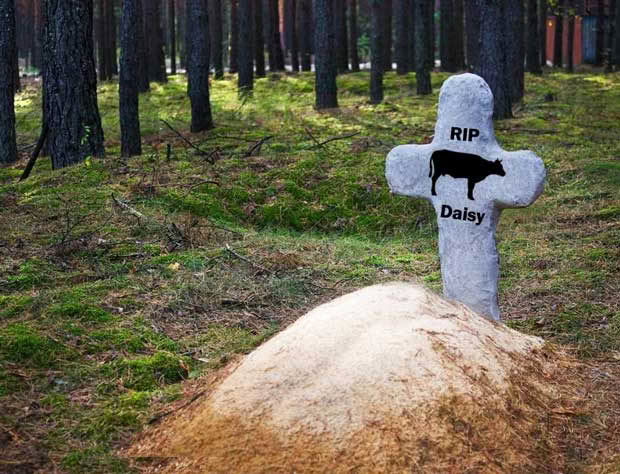How to dispose of a dead animal body

One of the hardest things to deal with after the death of large animal is disposing of the carcass.
Words: Nadene Hall
Even the best animal husbandry will not prevent the odd animal death. Disposing of dead stock appropriately is very important because:
- -decomposing dead stock is a source of disease producing bacteria and other organisms, e.g. salmonella, streptococcus and tuberculosis.
- poor carcass disposal can result in contamination of groundwater and waterways, which may be sources of human and/or stock drinking water.
- sight and smell of dead animals is a bad look for any farmer
THE PRINCIPLES OF DEAD STOCK MANAGEMENT ARE:
- dispose of the animal as soon as possible to reduce risk of disease spread.
- utilise free dead stock collection services that operate through most regions.
- do not leave dead stock on the roadside or within public view. Most collection services prefer to pick up inside the farm gate.
- The carcass must not be left within 45m of a dairy shed or in a waterway.
It’s best to evaluate your disposal options before you are forced to in bad circumstances. If there is no collection service available there are other disposal options to consider.
BURIAL
Advantages
- simple
- cost effective
- out of sight
Disadvantages
- cannot be used if groundwater level is high
- predator and vermin control is necessary
- stock cannot be buried within 100m of a waterway
OFFAL HOLES
Advantages
- simple
- cost effective
- easy to manage
- out of sight
Disadvantages
- cannot be used if groundwater level is high
- predator and vermin control is necessary
- stock cannot be buried within 100m of a waterway
- most efficient when using small and infrequent amounts of offal
COMPOSTING
Advantages
- an use in areas of high groundwater
- useful end product generated
- high composting temperatures destroys pathogens and disease
- good way to reuse sawdust from calf sheds or stables
Disadvantages
- reliable source of sawdust required
- requires an understanding of composting
- must fence off compost pile from other stock
- cannot use finished compost on pasture grazed by stock
BURNING
Advantages
- carcass is destroyed quickly
- any pathogens present are destroyed
Disadvantages
- requires extremely high temperatures to burn
- do not burn with rubbish
- can cause odour and smoke nuisance
- bones remain after burning
DO’S AND DON’TS
OFFAL HOLES
Do
- Open up the stomach of the carcass to allow the intestines out, for faster decomposition
- Puncture the rumen on its left side to release the gases to prevent toxic gas build up
- Add a small amount of bacteria starter such as effluent sludge to speed up the decomposition process
- Cover offal holes securely with a lid at all times
- Once an offal hole is full to within 1 m of the surface it should be retired and filled up with earth compacted and regrassed.
Don’t
- Do not site offal holes or bury stock near waterways, property boundaries or areas with high groundwater.
- Do not add lime to an offal hole or burial area as this slows down the decomposition process.
- Do not use an offal hole as a rubbish dump.
- Do not dispose of chemicals in offal holes.
- Do not light fires anywhere near offal holes.
- Do not locate offal holes and buriel sites within 45m of the farm dairy.
COMPOSTING
- Composting dead stock in sawdust is a new method of disposing of dead stock. If done correctly the composting process creates high enough temperatures to destroy bacteria and the sawdust soaks up liquid by-product, preventing leaching to groundwater.
- Carcasses are completely broken down within months, including bones. However the process does require a good understanding of composting, and sufficient amounts of sawdust must be available. Old sawdust from calf sheds can be re-used for composting. The final composted product must not be spread back on to grazed pastures. Ensure the composting area is well fenced off from other stock.
Burning
Burning is the last resort disposal method. Use an incinerator if possible or otherwise use a shallow pit with wood in the bottom and the carcass on top. It may be necessary to use an accelerant to get the fire up to the very high temperatures required to burn a carcass.
- Do not use tyres as a fuel to burn the animal, as it will produce a dark and toxic smoke.
Love this story? Subscribe now!
 This article first appeared in NZ Lifestyle Block Magazine.
This article first appeared in NZ Lifestyle Block Magazine.
